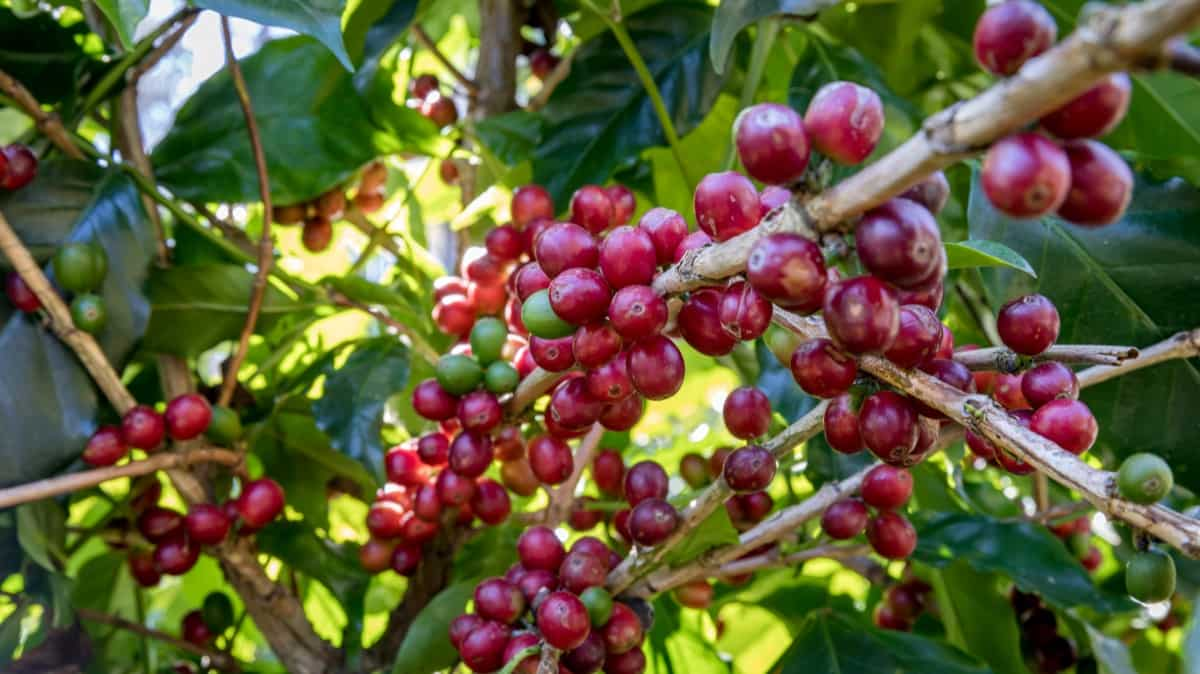Mastering Coffee Plant Cultivation: Your Practical Guide to Thriving Crops

Awakening to a cup of coffee brewed from beans you’ve nurtured from scratch isn’t just a fantasy—it’s a journey that rewires your senses, routines, and even your definition of patience. If you’re looking for the most honest, in-the-trenches master class on coffee plant cultivation—one that walks you from rookie missteps to the hard-earned edge of expert yields—you’re in the right place.

I’ve seen far too many guides gloss over what really separates a “meh” harvest from a memorable one. So here’s my promise: every insight below is grounded in real dirt-under-the-fingernails experience and pragmatic solutions. We’ll start street-level and build toward pro techniques—layer by layer, season by season.
Coffee Cultivation Master Class: From Novice Roots to Expert Harvests
1. Orientation: Why Most Coffee-Growing Guides Miss the Mark
Let me break with convention right away: Growing coffee isn’t about following a static checklist—it’s about reading the plant and responding dynamically as conditions shift. My first attempt back in 2014? I mimicked an online “step-by-step,” ignored my region’s acidic rainfall, and lost 70% of my seedlings to root rot inside three months. Lesson learned: context trumps canned advice.
Master Class Mindset:
Treat each variable—climate, soil, altitude—as your co-partner, not just background info.
2. Level One – Foundations Any Beginner Can Nail
Picking Your Protagonist: Arabica vs Robusta (and Rare Outliers)
Coffee variety isn’t flavor snobbery—it’s survival strategy.
- Arabica craves altitudes (1,200m+), steady cool (15–24°C), and loamy acid-rich soils.
- Robusta shrugs off heat, pests, humidity; it’ll grow at sea level but can taste like burnt rubber if mishandled.
Unexpected tip: In marginal climates (think southern US or Mediterranean fringes), hybrids like Catimor or Catuai sometimes outperform either parent for both yield and disease resistance.
Dialogue Moment:
“Shouldn’t I just grow whatever’s popular?”
A wise old farmer once told me: “Popular varieties only matter if they survive your weather—and your attention span.”
The Site That Sets You Up—or Sinks You
Every successful coffee plot I’ve seen shares four things:
- Air drainage (sloped terrain > flat ground)
- Consistent shade (30–60% dappled light is ideal)
- Rich topsoil with organic matter (pH sweet spot: 5.8–6.3)
- A water source within walking distance—watering cans get heavy fast!
Time-tested method: Dig a test hole after heavy rain; if water lingers more than two hours at root depth (~12"), amend drainage or reconsider location.
3. Level Two – Planting With Precision
Seed or Seedling? The Real Cost-Benefit Breakdown
Back in 2019, I ran side-by-side trials:
- Seeds ($10 for 50): Only eight sprouted, four survived transplant shock.
- Nursery-grown seedlings ($7/each): Nearly all thrived with minimal drama.
If time matters more than pennies—or you crave reliability—seedlings win hands down outside tropical zones.
Soil Prep: Skip This and Regret It All Year
Rake away weeds, dig deep for stones, then blend composted manure with native soil at a 1:3 ratio for each planting pit (about two feet wide/deep). Sprinkle sulfur if pH is above 6.5; lime if below 5.5.
Sensory cue: When prepping beds right after summer rain—the earthy aroma should be sweet-musty, never sour or sharp (signs of anaerobic decay lurking).
Spacing Secrets
Overcrowded coffee plants invite fungal party crashers.
- Standard: Space plants ~5’ apart (1.5m) both ways.
- On slopes >10°, stagger rows diagonally to minimize erosion channels.
4. Level Three – Nurturing Growth & Dodging Pitfalls
Watering Like an Expert
Picture this: morning dew evaporating as you check moisture levels by plunging a finger two knuckles into the mulch—cool/damp = good; sticky/wet = dial back.
Drip irrigation transformed my results overnight: uniform growth + no more leaf fungus from splashback = fewer headaches come harvest time.
Cost breakdown:
- Manual watering cans = free but labor-intensive.
- Drip irrigation kit for ten plants ≈ $60 upfront; saves dozens of work hours per season plus ~20% less water usage over hand-watering.
Shading & Microclimate Hacking
In year three on my original plot, temperatures spiked unexpectedly—I lost half my cherries to sunburn before realizing that makeshift shade cloth ($18 at the local hardware store) could have saved most of them.
Even pros interplant nitrogen-fixing trees (e.g., Inga edulis) every third row—a fix that not only shades but feeds soil bacteria naturally over time.
Fertilization & Feeding Regimes
Skip generic fertilizer blends unless they match YOUR soil test profile! My best tip? Use slow-release organic pellets pre-rainy season + monthly foliar sprays of kelp/seaweed extract during flowering spikes for denser cherry sets (~10–20% yield bump compared to control strips).

5. Level Four – Preventing Disease & Pests With Pro Tactics
Annual pruning after main harvest is non-negotiable—removes deadwood and forces lateral branch renewal where next year’s flowers will form.
Integrated pest management goes beyond chemical sprays:
- Weekly scouting at dawn (when pests are sluggish)
- Release ladybugs/lacewings near aphid outbreaks
- Install pheromone traps along windbreaks—these cost $7 apiece but can alert you weeks before borer infestations explode
Remember Moses’ WhatsApp group from Uganda? That instant crowd-sourced diagnosis approach has saved me entire rows during sudden rust blights by acting within hours—not days—of spotting symptoms.
Failed First Attempt Story:
My first “organic” rust control mix was just baking soda + water sprayed mid-afternoon in full sun… crisped every treated leaf like potato chips! Key lesson: Time foliar applications for early morning/evening ONLY and always dilute per label directions.
6. Level Five – Scaling Up For Flavor AND Efficiency
Harvesting Techniques That Pay Dividends
Never fall into “once-and-done” strip picking unless bulk volume trumps cup quality! Elite growers hand-select ripe cherries weekly across peak window (usually over six weeks). It’s tedious—but each round delivers beans at their flavor peak instead of muddled mediocrity.
“Why does this cup taste flat?”
Because yesterday’s green cherries got blended with today’s ripe ones—that simple.
A digital refractometer (~$100 investment) lets even smallholders gauge cherry sugar content on-the-fly; it changed how I scheduled pickers forever.
Processing Hacks From Pros
Small-batch fermentations using plastic buckets let you experiment safely with washed vs honey vs natural methods—even indoors.
Monitor temps daily (<30°C ideal); too hot = vinegar notes.
After pulping cherries manually (“elbow grease” optional), rinse mucilage under running water until seeds feel squeaky between fingers—a tactile sign they’re ready for drying.
7. Troubleshooting Table – Rapid-Fire Fixes From Experience
| Issue | Symptom | Field-Tested Solution |
|---|---|---|
| Yellow leaves | Patchy pale spots | Foliar iron/chelated micronutrient spray |
| Leaf curl | Edges roll up | Check root health; reduce midday sun exposure |
| Brown cherry drop | Fruit falls unripe | Water stress; increase mulch depth |
| Black sooty mold | Sticky leaves | Control scale insects underneath |
| Stunted new growth | Tips stop elongating | Top-dress worm castings + boost phosphorus |
One last personal tip? Keep a logbook right alongside your toolshed door—invaluable come year two when memory fades but patterns emerge.
Tools & Resources Shortlist — Real World Tested
- Soil pH meter: Luster Leaf Rapitest ($19 Amazon)
- Pruners: Felco #2 Classic ($54 but lasts decades)
- Shade cloth: Aluminet reflective mesh—keeps roots cooler than black poly types!
- Compost bin: DIY pallet box or Joraform tumbler for faster winter decomposition
- Community knowledge: r/CoffeeGrowing on Reddit or local extension offices—they diagnose photos faster than Google ever could
Action Plan – Zero-to-Harvest Timeline At-A-Glance
| Stage | What To Do | Timeframe |
|---|---|---|
| Site selection | Analyze slope/drainage/soil | Week 1 |
| Sourcing | Order seedlings/certified seed | Week 2–3 |
| Bed prep | Amend/test/adjust pH | Month 1 |
| Plant out | Space/install mulch/shade | Month 2 |
| Establishment | Water/feed/prune weekly | Months 2–12 |
| First flower/buds | Boost feeding/protect pollinators | Year 2 |
| Cherry ripening | Hand-harvest/select process | Year 3–4+ |
Earning Your Place Among Skilled Growers
Mastery grows through cycles—not shortcuts—and every batch reveals fresh lessons if you’re listening closely enough:
- Test unconventional methods carefully before scaling up.
- Be curious about failures—they point straight toward tomorrow’s improvements.
- Share findings with other growers; their feedback will save you years of wasted effort.
Five years out? You’ll remember that first mug brewed from your own crop as nothing short of mind-altering satisfaction—the culmination of sweat equity, creative problem-solving, and patient observation scored day after day.
Whenever doubt creeps in (“Am I really cut out for this?”), revisit these steps—or reach out to someone else who’s wrestled past their own false starts.
Bookmark this guide as your field companion—and when those glossy green leaves finally unfurl under your care? Pass along one lesson learned so the next wave of cultivators can stand taller too.
Now go plant—with confidence sharpened by hard-won know-how,
and let every bean tell its origin story through your hands,
your choices,
and ultimately…your cup.



